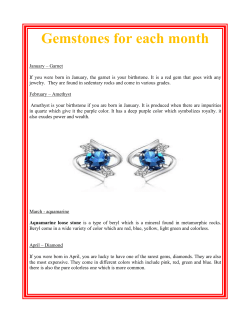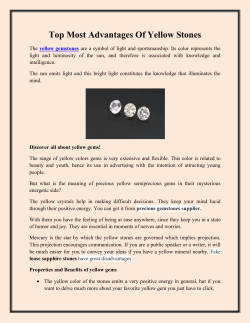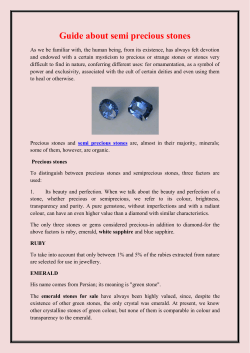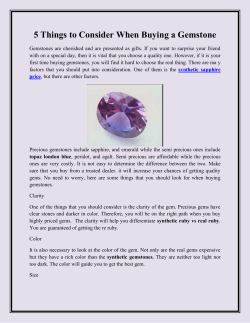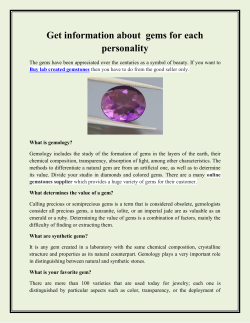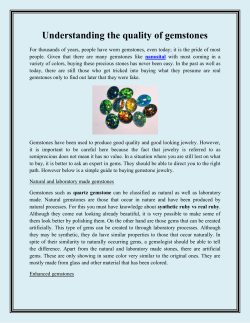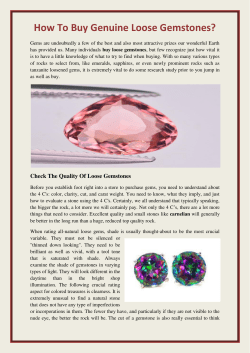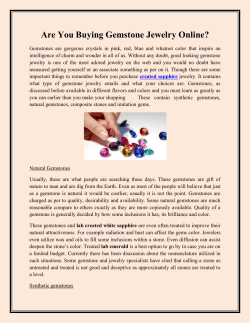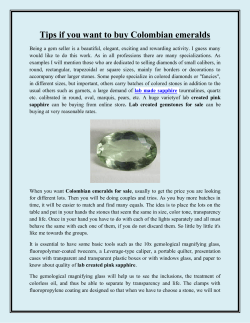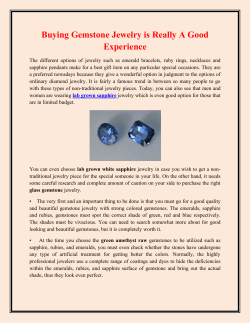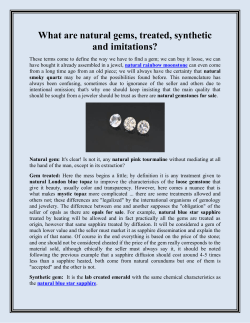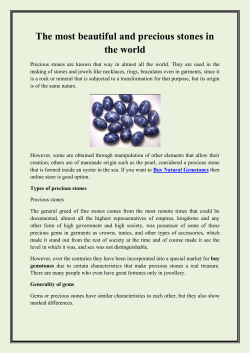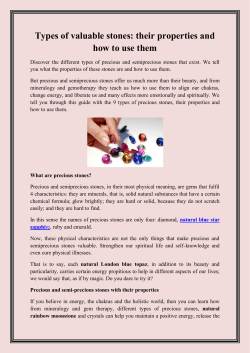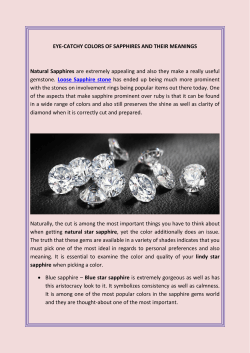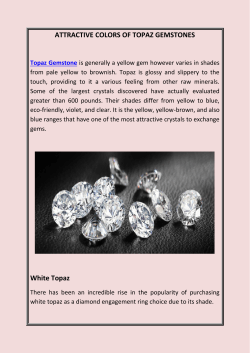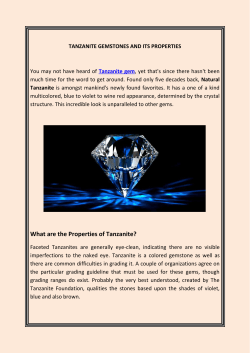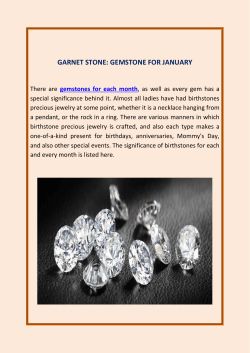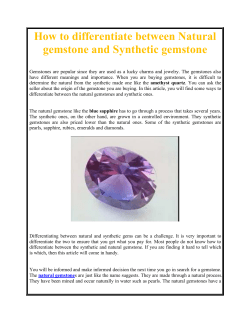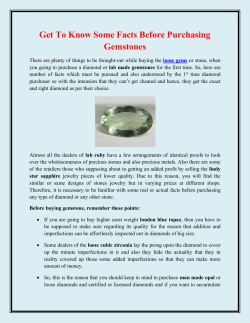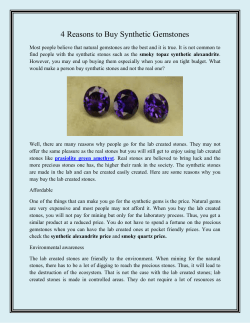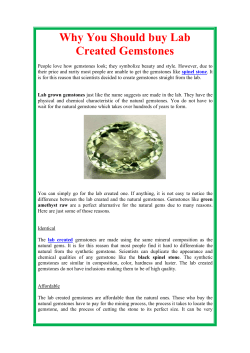
Benefits and features of semi precious gemstones
Benefits and features of semi precious gemstones Many people buy gems by type - for example, they want to buy a natural smoky quartz, a tourmaline or an amethyst. But something we have learned in the gemstone business is that most customers are primarily concerned with colour and less interested in the variety of gems. Since colour is actually the most important factor for most people when it comes to buying loose gemstones, it only makes sense to start your search by buying precious stones by colour. Semi precious stones The semi precious gemstones have a very different value among them and it is much easier to get semiprecious stones of great size and purity (clean) than precious stones of such characteristics. The oscillation of its value or cost will depend on the same conditions that influence the precious stones: hardness, rarity and beauty and perfection. There are approximately 130 mineral species catalogued as semiprecious, in addition to amber, which is a fossilized vegetable resin. Finding rainbow moonstone by colour can often be difficult, since web pages tend to organize their inventory by variety of gems instead of colours. So for those who want to know what their options will be in particular colours, here is a list of types of gems organized by colour. Since there are hundreds of colour variations in colour gems, we have organized this list based on "base" colours or families of colours. This means that an orange-red gem can enter the category "orange" or "red" and a green-blue stone would be in the category "green" or "blue". Red gems Red gemstones are actually quite rare and are found mainly in ruby gemstone, spineland garnet. Pink gems The most famous pink gemstones are tourmaline and spinel. Pink sapphire is charming but rare, especially in gems weighing more than 1 carat. Garnet rhodolite tends to be pinkish-purple. Blue gems The classic blue gemstone is sapphire. Intense saturated blue is also found in spinel and kyanite. There are many choices in the lighter blues, including pink topaz, zircon and aquamarine. The Tanzanite and iolite have a more violet blue tone, while the tourmaline Paraiba, the apatite and fluorite tend to have a blue-green colour. Green gems The peridot, which tends to be olive green, has become an important jewellery gemstone. Yellow / golden gems Citrine is the most common golden-yellow gem, but yellow sapphire is most sought after. There are also good choices in tougher gems such as beryl and chrysoberyl. Canary yellow tourmaline from Malawi is very rare. Violet / purple gems The amethyst is the classic example, though fluorite can also be found in a similar shade of purple amethyst. There are wonderful violet tones in the spinel, the tourmaline and the sapphire. Chalcedony is often found in a unique lavender tone. Orange gems The espesartite garnet is the most famous orange gem but there are also several options. The orange sapphire is produced by heat treatment, while the finest fire opal is in orange-yellow to orange-red tones. White gems This category includes both colorless gems, such as diamond, sapphire, zircon and topaz, as well as precious white stones such as opal and moonstone.
© Copyright 2026
